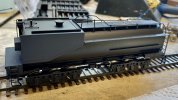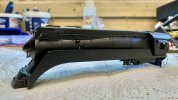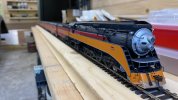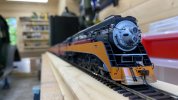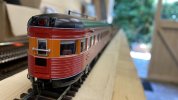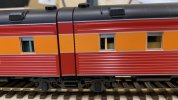richard carr
Western Thunderer
Dave
Thats a very useful document, thanks for posting.
Paul you shouldn't have any problems with acrylic going over enamel.
I have used Vallejo acrylics to paint my SP GP9 in grey and red livery. As suggested by Mickoo I added a drop of thinners and a drop of flow improver to the paint before spraying.
As for primer I used Halfords etch primer, here's the link to the photos on the GP9 thread
Richard
Thats a very useful document, thanks for posting.
Paul you shouldn't have any problems with acrylic going over enamel.
I have used Vallejo acrylics to paint my SP GP9 in grey and red livery. As suggested by Mickoo I added a drop of thinners and a drop of flow improver to the paint before spraying.
As for primer I used Halfords etch primer, here's the link to the photos on the GP9 thread
Red Caboose GP9 kits - ALL builders/Models/Info/References welcome
Yeah, I had the hood side mounted bell in my list before I hit post, but I removed it because I thought I was mixing up the bell with the Southern habit of putting a walkway light in the same position. Guess I should have trusted my instincts. CSX got units from all over the place as it...
www.westernthunder.co.uk
Richard

